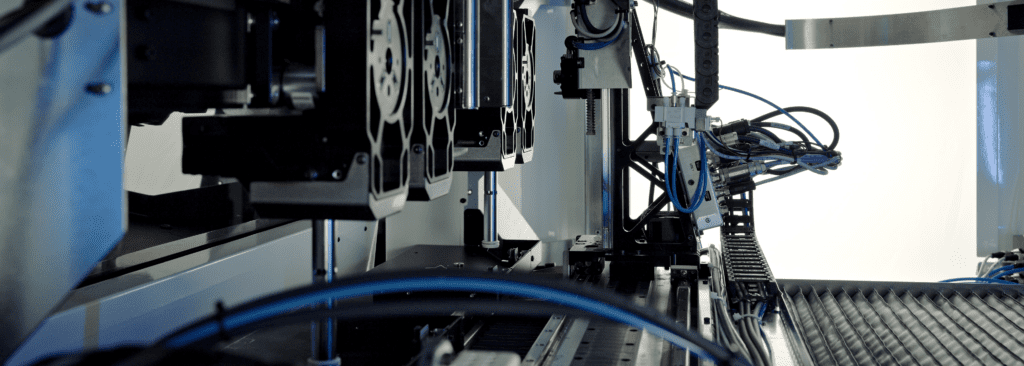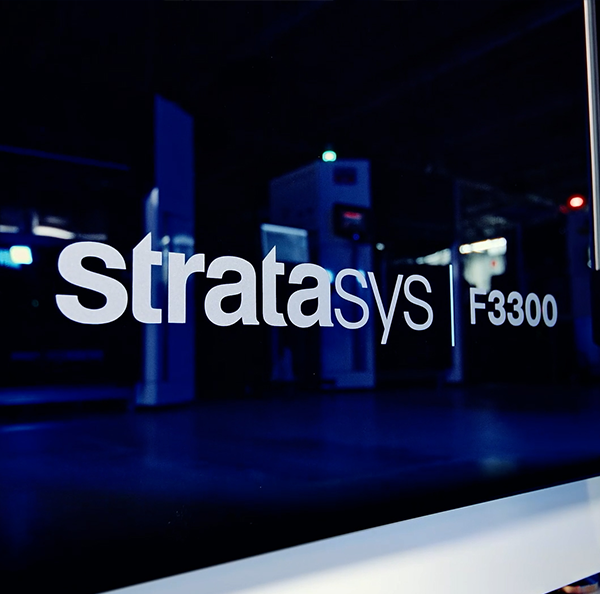The new standard in industrial FDM® technology
The Stratasys F3300 FDM 3D printer is the culmination of over 30 years of experience in FDM technology. This ground-breaking printer will be available for shipment in early 2024 and is designed for speed, ease of use, reliability, and high yield. The F3300 is the most sophisticated industrial 3D printer on the market and is sure to revolutionise the way manufacturers produce products.

Frequently Asked Questions about the ‘Stratasys F3300’
The F3300 is 2073mm (81.6 in.) wide, 1689mm (66.5 in.) deep and 2210mm (87 in.) to 2393mm (94.2 in.) tall.
The build chamber is 600mm (23.6 in.) x 600mm (23.6 in.) x 800mm (31.5 in.), equalling 0.288 cubic metres (10.16 cubic feet).
The print speed is up to 500 mm/s (19.7 inches/s)
Key benefits of the F3300 include: reduced lead times, improved product quality, lower production costs and maximised uptime.
There are 4 build materials available on the F3300 (ASA, PC (polycarbonate), FDM Nylon 12CF and ULTEM 9085 resin) as well as a range of soluble and breakaway support materials.
The F3300 can use GrabCAD Print, GrabCAD Print Pro and Insight software.
The F3300 is designed to be easy to use and operate, even for those with no prior experience in 3D printing. The printer features a user-friendly interface and a variety of automated features that make it simple to set up, operate, and maintain.
Key applications of the F3300 include: prototyping, manufacturing, medical, aerospace and automotive.
No. There is no requirement to purchase any additional material licenses to use the materials available on the F3300.
No. Instead, the F3300 is optimised with a different filament diameter and uses new larger 4100cc (250 cubic inch) spools.
Yes. The F3300 requires 13 standard cubic feet per hour (SCFM) at 90-110psi.






